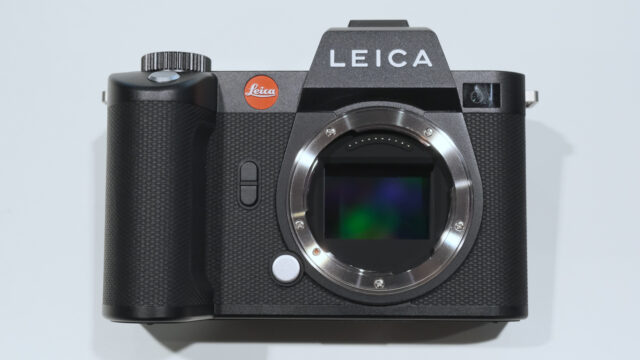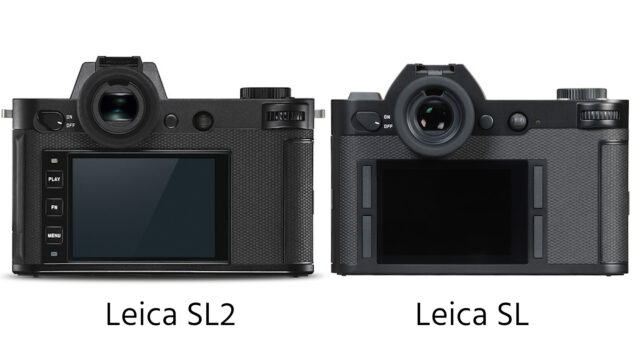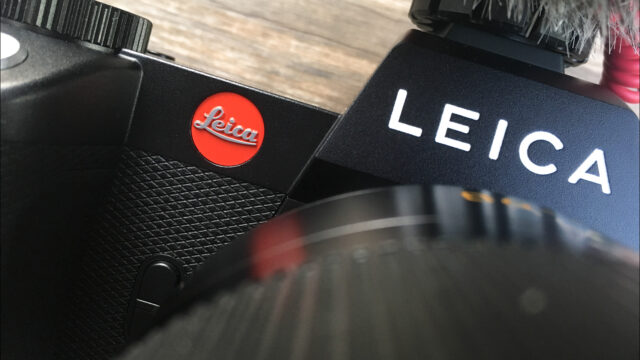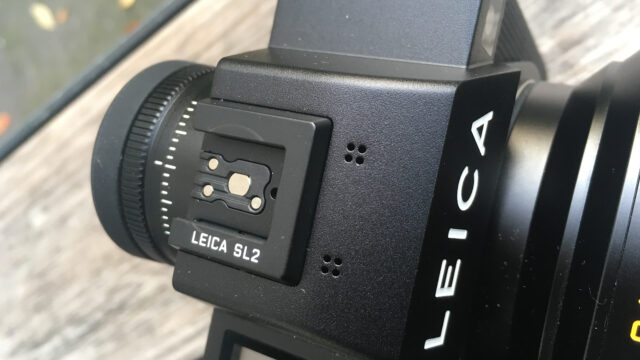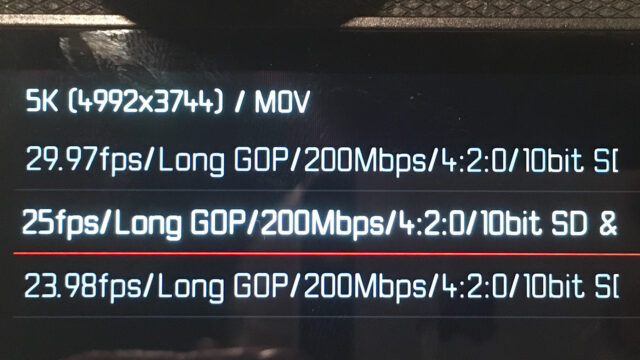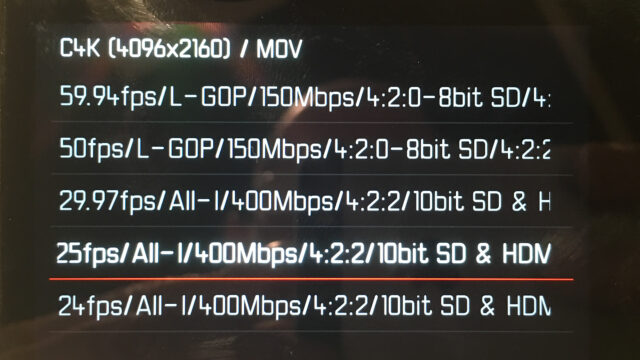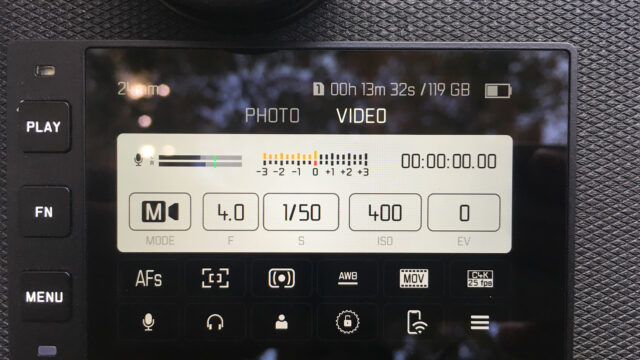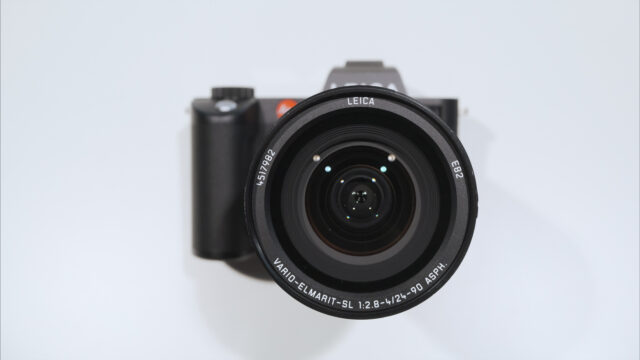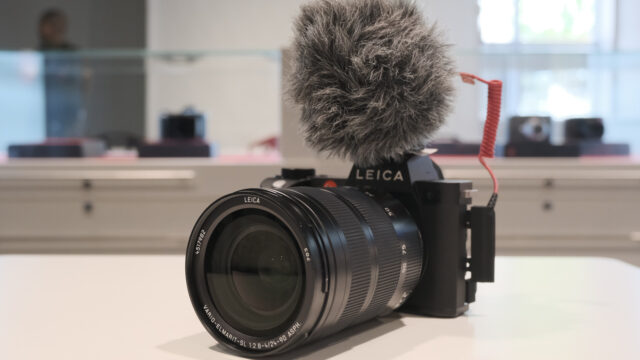Leica SL2 – First Impression and Sample Footage
Music Courtesy of MusicVine.com Get 25% off your next music license with code C5D25 (valid for one use per customer)
Edit: We have reached Leica seeking their official response to our findings and I have to say that the company was very fast to respond with very useful technical information (see their response at the bottom of the article). If you are interested in a full review of the SL2, keep an eye on this space. But on a personal note, this camera truly excites me. The images it can produce are simply engaging. I’m eager to receive the camera soon and put it through its paces.
Leica’s flagship camera the SL2 was announced earlier this month and there is a good chance that by the time you read our article, it has already arrived at your local dealer. With a variety of goodies like high resolutions (up to 5K), variable frame rates (up to 180 fps in full HD), variable data rate (up to 400 Mbps in H264), a modest selection of picture profiles including LOG and HLG (Hybrid Log-Gamma), 5 axis In Body Stabilisation System, 10bit 4:2:2 recording and more, I was eager to take this new camera for a short spin. I’ll spoil now and summarise that this camera has A LOT to offer when it comes to video image quality, but moiré, in particular, needs to be eliminated badly.
Do you know that feeling when happiness is mixed with a bit of sadness? That’s how I felt when putting my hands on the new Leica SL2. I got happy to see that Leica is showing commitment to our filming community by introducing what seems to be a very capable filming tool but, at the same time, sad as I got four years older since I’ve tested its predecessor, the SL… I can’t believe how fast four years had flown since I shot the SL video review. That camera (The SL), left a great impression on me as the images that came out of it were the best I’ve ever seen from a mirrorless camera at that time. So obviously I was curious to see what Leica’s new creation brings, hoping that nothing has been lost during the process of developing the new SL2. After all, a lot has changed in our industry since that time. The camera market shrank even more and current full frame options are larger than ever, bringing the competition on every purchase to new heights.
It’s Tokyo Baby
It’s Tuesday 10:58 a.m Japan time and I’m standing excited in front of Leica’s flagship store at Ginza, Tokyo’s luxury district for shopping. The store will open at 11:00 precisely like a German watch. A few minutes later and I’m already getting myself familiarise with the SL2 menu. The start is positive as there is a dedicated VIDEO/CINE structure menu so whatever is not relevant won’t be shown. It looks as if Leica’s engineers tried to keep the menu operation simple in order to fit it to the clean design of the camera itself. They did succeed, in a way as I was “up and running” tuning the camera to my liking in a relatively short time. Mind you that there are some quirks like showing a certain shooting mode, and while the visual description on the LCD claims that the camera can record internally to an SD card, in reality, when pressing the recording button an alert message pops up saying that this specific recording mode can be activated while using an external recording device only (high frame rate recording in various resolutions is a good example for that phenomenon). On top, there is also a malfunction when attempting to record high frame rate in LOG picture profile mode. All indicates that it is possible to do so up to the point of pressing the recording button. Then the camera “jumps” automatically into the “NAT” (natural) picture profile. Why is it happening? No clue. I want to believe that those kinds of faults can be solved with a firmware update.
Leica SL2, Minimalistic Design – (Almost) Max Performance
Moving on to the camera itself and its minimalistic design, what can I say but bravo Leica! Externally, it looks as if they have changed only what considered for them fundamental for better and easier operation (like separate standard headphone and mic connectors. Rerouting the position of REC button to the shutter release button and in addition, the 4 soft keys surrounding the LCD of the SL are now a thing of the past. Instead, three “proper keys” are now resident on the LCD left-hand side). The SL 2 feels extremely robust and complete, it is simply a beautiful looking camera, one that I found myself looking at over and over again. Now, as you don’t really buy a $5,995 camera just to look at, it was about time to go out of the shop and film a little bit with it. And when I write “little”, please catch me in my word… I only had about 4 hours with the camera as I had to catch a flight right after. Well, I think it is better than nothing as this article and the inclosed footage are NOT meant to be a review in any way, just a quick first impression, something to satisfy my curiosity and see if its image aesthetic was kept from what I’ve remembered from the SL.
Does Family Roots Matters?
It’s no secret that Leica and Panasonic are cooperating VERY closely together and I won’t be surprised if what we see here is a result of this cooperation. From sensor size to the number of pixels (Full Frame, 47.3 MP in both the SL2 and Panasonic’s S1R), to the great EVF, responsive touch screen LCD and IBIS. Even the not so great autofocus performance is shared – contrast-detection type focus on both cameras. There are clues all over the place that the Leica SL2 and Panasonic range of Sxx cameras are related. That said, it seems like the actual processing of the image is COMPLETELY different! While Panasonic’s Sxx line of cameras can produce beautiful footage, their archils hill is its strong unforgiving noise reduction which causes the image to look a bit “too clean”. With Leica, the story is different. Of course, we haven’t tested the SL2 in our lab yet, but to my eyes, the look has a strong “identity”! Unlike the previous model, it seems that the flat LOG picture profile has been tweaked and now it is not so “milky” as it used to be. In the above video, I applied our “custom made Leica SL LUT”, manipulated the contrast and exposure a bit and Voilà, here is an image I can certainly write home about, UNLESS, well, keep reading on.
Oh and on second thought, S1, S1H, S1R, SL2, all sounds a bit too similar, no?
By now, it is evident that I like what I see in this camera, but what about the weaknesses found during the short time I’ve spent with it? I’ve already mentioned the menu quirks. On top, watching the bit of high frame footage I took (180/150/120fps in full HD), well, none is really looking usable… I hope the day will come when non-usable frame rates won’t be included in a camera for the sake of marketing purposes only. When it comes to powering, the supplied camera battery seems to do an OK job, but to my surprise, at a certain point when the battery level went low, the camera popped up a message saying that 4K video can not be recorded. I’ve tried switching to HD, and indeed, the camera was still functioning. So, take it into account, when you are out and about, what you see is not what you get battery indication wise. Those are the kind of issues that we filmmakers can live with (I think), but one noticeable drawback might be a cause for real concern, MOIRÉ. In all honesty, I did not expect from such a pedigreed modern camera to exhibit such kind of strong moiré. On top, it seems like this is not a high-performance lowlight camera of any sort, so calculate your shooting scenarios accordingly. Of course, there are other shortcomings like the exclusion of modern efficient codec like H265, or better yet, RAW recording, but hey, who knows, maybe some other goodies can be implemented within the next 4 years until the SL3 sees the light of day.
In the Field – 5 Axis In-Body Stabilisation, AF, Ease of use and more
I could spend only a short time with the SL2, but all in all, I really had fun filming with it! The IBIS is truly amazing (Panasonic Sxx anyone?) and the autofocus is working well as long as you don’t stress it too much is AFC mode (continuous AF). Again, sounds Panasonic-ish somehow… Also, to my eyes, the rolling shutter performance looks good! (See the GIF below).
In regards to power consumption, it was nice to see that 25 minutes of a coffee break gave life back to the drained battery that refused to cooperate when filming 4K DCI before. Connected directly to the camera via USB-C, this “fast charging method” was what I needed in order to put me back on track and finish the day. When it comes to lowlight capability, I would say that it is safe to film around ISO 1600. Above that, the image becomes noticeably noisy – more pixels, small size, less light sensitive. We don’t have the information concerning the native ISO of the camera, but ISO 400 is as low as one can go.
When it comes to actually choose a filming resolution and frame rate, I went with 4K DCI – this mode alongside 4K UHD will give you maximum performance in some frame rates, namely: All-I, 10bit, 4:2:2, up to 400 Mbps. If you aim to explore 5K filming, be aware that this option is limited to those settings to choose from: Long GOP, 200 Mbps 4:2:0, 8bit.
I would also want to highlight the fantastic EVF, responsive touch screen LCD, joystick, and the three configurable buttons at the back. Each in its turn was very helpful in operating the camera fast and accurately.
Back to the camera menu, depending on your working style, you can choose between “VIDEO” and “CINE” modes. Cine will allow reading the shutter speed information in degrees ISO in ASA and aperture in T stops.
Leica VARIO ELMARIT-SL f/2.8-4 24-90mm Lens
A camera will bring to the table some of the important ingredients for creating “a look”, but of course the other vital component is the lens being used. For the above video, I used the Leica VARIO ELMARIT-SL f/2.8-4 24-90mm lens as I needed to be quick and also, I remember to enjoy working with it during my SL review and it did not let me down this time too. Although I have to say, that the situation then and now is totally different. Having the L alliance between Leica, Panasonic and SIGMA means greater lens offerings and I’m very much tending to try and use smaller lenses on those large size Leica and Panasonic camera bodies. To my knowledge, currently only SIGMA is producing a small capable L mount lens (The 45mm), but the alternative is using small Canon FD lenses together with a KIPON FD to L-mount adapter. This can reduce the overall camera/lens weight, keep the possibility to achieve high quality images (but a bit softer, which is not necessarily a bad thing), and of course, lower the total price of such a set. My colleague Gunther took the Panasonic S1 together with a KIPON adapter and his set of Canon FD lenses. Watch this space for his review and impressions for working in such a way.
Final thought
By no means, this is a review! I took the camera for a short spin, enjoyed using it and decided to share my thoughts with you guys. So, for now, I wouldn’t want to come up with a solid conclusion but I think that if image quality is your main objective (and money is not an obstacle) then this camera should really be considered (as long as moiré can be controlled). I mean, I keep talking about “aesthetic” and “image identity” (Mojo anyone)? and in my opinion, this camera certainly has a lot going for it.
The above video was shot HANDHELD on a Leica SL2, 4K DCI, 25p. Graded with our original “Leica SL LUT”.
Edit: Leica’s response to my findings
* Regarding L-Log: We do not believe that Log is helpful for 8 Bit video post production, so it is restricted to the 10 Bit modes only (Internal to SD recording or external via HDMI)
* Moiré: The camera is designed without optical low pass filter in order to maximize the acutance for still images. When recording video in full frame mode, we use pixel mix to get the 4k resolution. But the camera offers as well a full scan option by switching to APS-C format (means roughly Super 35). We all know, that there is some demand for full frame 4k filming and SL2 does follow this demand in order to make the aesthetics of the large sensor available for specific applications. But if the aesthetics of the large format is not needed and a more technical approach regarding image quality is required, the APS-C option does deliver better performance with SL2´s high resolution sensor. It will provide video without pixel mix and on top better rolling shutter performance. (Rolling shutter is already pretty good in full frame with this camera vs. competition)
On top, Leica SL lenses are designed for ultimate detail contrast, offering MTF >50% at 60 LP/mm. The drawback of such lenses is the tendency to produce Moiré if the lens resolution is better than the sensor resolution. Regarding Moiré for such periodic structures it is the best solution to use an optical low pass filter inside the camera or with a lens with low detail contrast performance. So it is tricky to find the right balance, but our philosophy is always to maintain as much as possible detail (same is true for the noise reduction, as you correctly reported in your article). So we do not necessarily see this as a weakness of the concept, but potential customers need to know the special characteristics of our product: If you would like to maintain maximum detail, this camera is most probably the best in the market and for non periodic structures it will not cause any issues. If average detail sharpness (and that does produce a somehow boring look) is required and the absence of any Moiré is most important, a camera with OPLF will serve such requirements much better.
* Regarding compact lenses: We do have a full assortment of APS-C L-Mount lenses with very high optical performance. So in order to keep the video camera equipment small, there is no adaptation needed. The camera will select the APS-C mode by itself. So instead of choosing a slow full frame lens, it will be the better solution to use a slightly faster APS-C lens. The look will be the same, but size and technical IQ will be improved by APS-C mode. https://us.leica-camera.com/Photography/Leica-CL-TL2/Lenses-for-Leica-TL?/switchlanguage/to/corposite_eng_us/155573
The other option for compact lenses is the Leica M-lens adaptation: These are the most compact lenses for full frame on this planet and SL2 does support the lenses like our M-cameras. Lens type is automatically detected with the Leica M to L-Mount adaptor and these lenses offer unique classical rendering performance. The optical pass between lens and sensor surface is a unique Leica design with SL2 and supports the performance of M-lenses like no other mirrorless camera (except the Leica M).
For usage in a typical movie camera setup, M-lenses are available from our sister company with modified mechanics: https://www.leitz-cine.com/m-08-cine-lenses/. With next lens firmware update our lenses will allow linear focusing (angle for infinity to close focus position is selectable) and do operate in Cine Mode with real T-Stop values instead of F-stop values in order to allow the integration in a movie camera setup.
* Battery preference: The camera has some peak current requirements that can not be provided by the battery below a certain charging level. We did decide to go this way, because the majority of customer do use the camera as a still camera. This issue can only be solved by a bigger battery. This would mean for the majority of customers to carry a bigger and heavier camera body for a functionality, that they do not use. For serious video product we did implement the USB power supply option. From our point of view this is the best solution for such a versatile product.
Music courtesy of MusicVine.com – Get 25% off any Pay-Per-Use license with code C5D25 (valid for one use per customer).
A special thank you to Yuya Koike – Leica Professional Store Tokyo, and Osamu Tsukada – Leitz
Guys, what do you think? Can you see yourself spending almost $6000 on the Leica SL2? Please share with us your thoughts in the comment section below.
